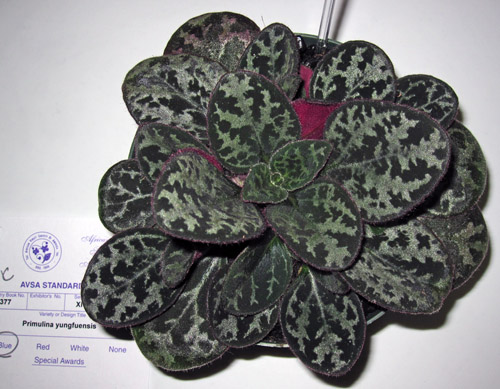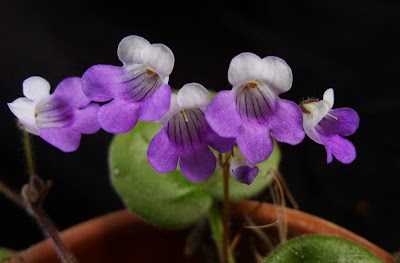 |
| Primulina diffusa described by GCCC |
Do you have any trailers?
In the future when the Asian Violet Society of America (AVSA)
holds judged flower shows and plant sales, there will be hobbyists looking for
trailers. What will that mean?
Our mythical plant society will someday rival the African
Violet Society. Maybe even take it
over. Most of the members of the Asian
Violet Society will have come from their interest in African Violets.
African Violet trailers are collector varieties that are interesting
when each crown makes continuous side crowns which can make a dense cluster of plants.
Therefore a lot of flowers are possible.
We already can see that the genetic pool of Primulina species
is far greater than the species pool of Saintpaulia. There are blue, white, pink and yellow flowers. Bracts can be big and will enhance the flowering. We have plain green and highly variegated
foliage, big and tiny plants.
And yes, we have trailers.
The species P. diffusa and P. hoehiensis feature stolons and form
clusters of adjoining plants from sideward stolons. There may be other species that have stolon
capabilities and this trait will carry into hybrids.
In African Violets, single crown plants dominate commercial production. So far single crown Asian Violets are preferred. But who knows what will happen when trailing
species find their way into Primulina hybrids.
Hide and
watch!
 |
| Primulina hoehiensis (L) from GCCC |
















